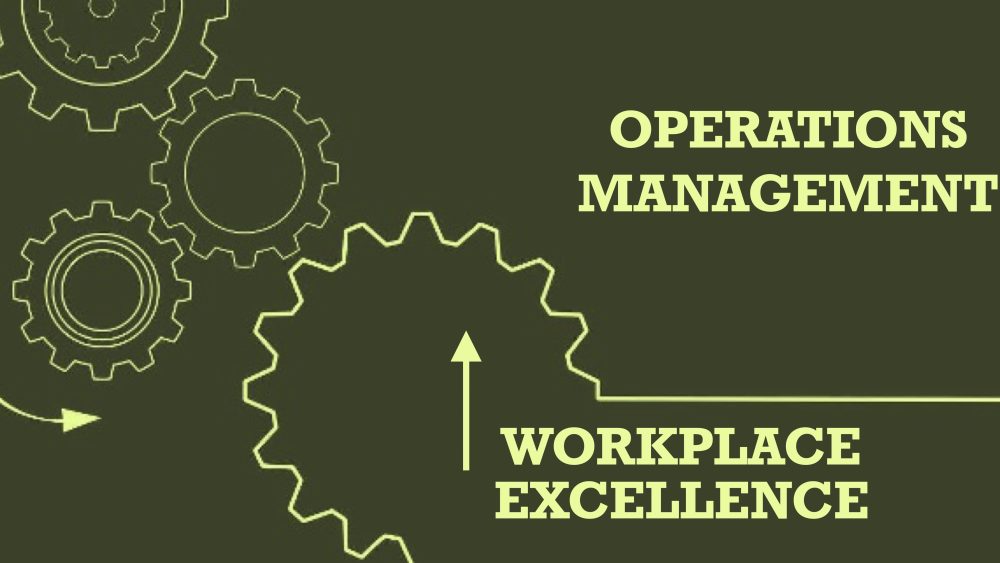Operations management influences every aspect of running a business, from producing goods or services to tracking efficiency and contributing to the bottom line. It drives efficient workforces, processes, quality, safety and supply chains, enabling you to maximise profitability and stay competitive.
We’ll discuss setting up workplace management, cascading strategies to the workplace, and sustaining and improving operational effectiveness over time.
Setting up an effective workplace management system is crucial for optimising operations and achieving workplace excellence. Clearly define your objectives and goals for implementing workplace management. These may include improving efficiency, reducing waste, enhancing quality, or increasing productivity. Establish measurable targets to track progress and success.
Developing a structured plan will be integral to the effective implementation of your operational management strategy. A high level structure should follow:
1. Analyse your current processes and workflows to identify areas for improvement.
2.1 Design an optimised workplace layout that facilitates smooth material and product flow, minimising unnecessary movement and delays.
2.2 Create an efficient workflow system that promotes collaboration between functions, ensuring seamless service provision and reducing bottlenecks and inefficiencies.
3. Establish standardised procedures and visual management tools (e.g., whiteboards, charts) to streamline communication and collaboration between management and employees and cross functionally.
To effectively develop and maintain operational management in action, you can utilise a variety of tools and techniques for implementation:
- Implement a systematic approach to problem-solving, PDCA (Plan-Do-Check-Act) cycle.
- Utilise visual management techniques to easly identify normal vs abnormal conditions; like Andon systems to convey information quickly and effectively.
- Develop standard operating procedures (SOPs) to standardise work processes, leading to greater efficiency and productivity.
- Monitor and analyse key performance indicators (KPIs) to measure progress and identify areas for further improvement.
To ensure everyone is aligned and engaged, it’s essential to communicate the strategy clearly. Visualise the ambition, and outline the needed changes to the status quo with measurable metrics. At the same time, transparently explain the strategy’s logic and development process.
By breaking down the overarching strategy into actionable steps, employees gain a clear understanding of how their daily tasks tie into broader goals, enabling effective prioritisation. This alignment enhances accountability, encourages collaborative teamwork, and ensures a united effort towards shared targets.
Effective monitoring and feedback mechanisms are key to any dynamic operation. Ensuring employees have accessible channels to voice their opinions, report problems, and offer suggestions is fundamental. It’s important to regularly track progress, celebrate the wins and promptly tackle any obstacles. Staying adaptable in your communication approach as circumstances change is also vital. Continuous improvement relies on actively listening to stakeholder feedback.
Every industry has its own set of challenges, regulations, and best practices. Customising your operations management strategies is essential to address these unique requirements effectively. For instance, the healthcare industry prioritises patient safety and regulatory compliance, while the manufacturing sector focuses on optimising production processes and supply chain efficiency while focusing on customer value.
Develop strategies that are flexible enough to accommodate changes in market conditions, customer preferences, and technological advancements. Encourage a culture of continuous improvement and empower your teams to identify and implement process enhancements proactively.
Sustaining and improving operational effectiveness is crucial for maintaining a competitive edge. Here are some strategies to consider:
- Adopt structured methodologies to drive continuous improvement. Utilise tools to identify inefficiencies and implement solutions systematically.
- Invest in ongoing training and skill development for your workforce. Provide targeted learning opportunities to address skill gaps, upskill employees, and foster a culture of continuous learning.
- Regularly evaluate your processes by defining relevant KPIs, mapping workflows, and analysing data. Identify bottlenecks, redundancies, and areas for improvement.
- Encourage employee involvement and leverage their insights to drive operational excellence.
In the pursuit of operational excellence, organisations must embrace a relentless commitment to continuous improvement. The journey towards operational excellence is a continuous one, requiring dedication, adaptability, and a keen eye for identifying areas of improvement. By setting up robust operations management practices, cascading strategies effectively, adapting to industry-specific nuances, and sustaining operational effectiveness through ongoing refinement, organisations can unlock new heights of productivity, profitability, and competitive advantage. Embrace these principles with enthusiasm, and you’ll be well-equipped to navigate the ever-evolving business landscape with confidence and agility.


